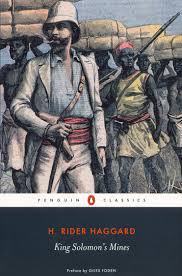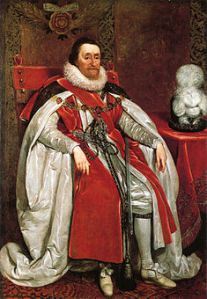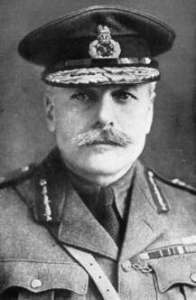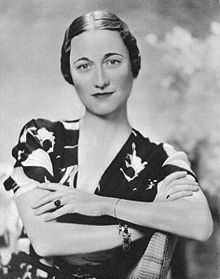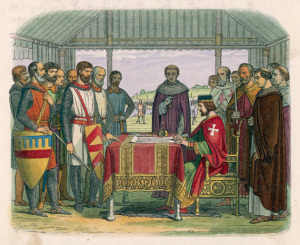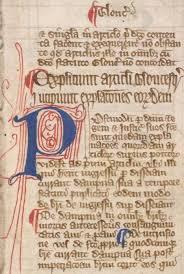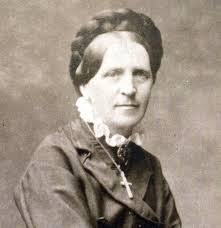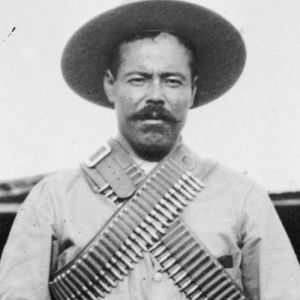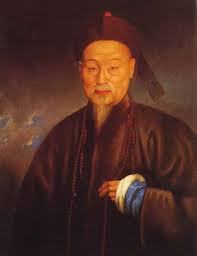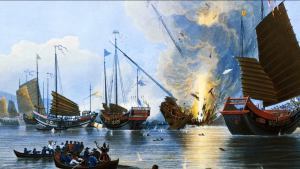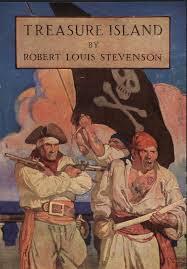Louise M.H. Miller's Blog, page 7
June 21, 2015
A Month of: This Day in History
On 22nd June 1856 English writer of adventure novels, Sir Henry Rider Haggard, known as H. Rider Haggard was born. His novels are based in exotic locations predominantly Africa, and include popular and influential stories such as King Solomon’s Mines and She.
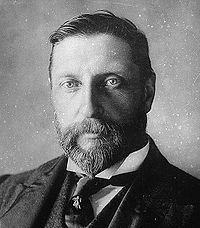
His novels contain many stereotypes of colonialism, yet with a degree of sympathy with which the native population are portrayed, with Africans often playing heroic roles.
King Solomon’s Mines – written in 1885 and detailing the life of adventurer Allan Quatermain is a crackingly good adventure novel and considered to be the birth of the Lost World literary genre.
She – One of the classics of imaginative literature and is one of the best selling books of all time. Popular since its release, it has never been out of print – and it is easy to understand why. It is an incredible read and an extraordinary feat of imagination.
Filed under: Uncategorized Tagged: adventure novels, Allan Quatermain, British Empire, Colonialism, h rider haggard, imaginative literary, imperialism, King Solomon's Mines, literature, lost world genre, She


June 19, 2015
A Month of: This Day in History
On this day
19th June 1566 – Birth of James VI and I of the United Kingdom. He was James VI of Scotland and became James I King of England after the union of the Scottish and English crowns in 1603 upon his accession to the throne. He was the son of Mary Queen of Scots, and succeeded to throne after the death of the last Tudor monarch, Queen Elizabeth I who died without an heir. He reigned for 22 years in an era known as the Jacobean era named after him, until his death in 1625, at the age of 58. He faced many problems in England, most notably the Gunpowder Plot in 1605.
19th June 1861 –Field Marshal Douglas Haig is born. He was a British senior officer during the First World War and commanded the British Expeditionary Force from 1915 to the end of the war, commanded during the Battle of the Somme, the Third Battle of Ypres and the Hundred Days Offensive. First applauded for his actions and mourned upon his death in 1928, from the 1960s he became an object of criticism for his leadership during the First World War, and became known as ‘Butcher Haig’ for the two million casualties under his command and became the model of class-based incompetent commanders unable to grasp modern tactics and technologies.
19th June 1896 – Birth of Wallis Simpson, the American socialite and wife of Edward VIII. Prince Edward, the Duke of Windsor, her third husband, formerly King Edward VIII abdicated his throne to marry her. After their wedding six months after his abdication she was awarded the title Duchess of Windsor, but without the style ‘Her Royal Highness’ instead being referred to as ‘Her Grace’, normally reserved for non-Royal dukes and duchesses.
Filed under: Uncategorized Tagged: battle of the somme, british expeditionary force, butcher haig, douglas haig, duchess of windsor, edward viii, First World War, gunpowder plot, james vi and i, scotland, union of the crowns, wallis simpson


June 17, 2015
A Month of: This Day in History
On 17th June in 1631, Mumtaz Mahal dies during childbirth. In a display of love and grief her husband Mughal emperor Shah Jahan I spent the next 17 years beuilding her mausoleum – the now iconic Taj Mahal. The white marble mausloeum is situated on the southern bank of the Yamuna River in Agra, India.
The Taj Mahal is regarded by many as the best example of Mughal architecture and is widely recognized as “the jewel of Muslim art in India”. Today is one of the most celebrated structures and a symbol of India’s rich history. It attracts some 3 million visitors a year and has been designated a UNESCO World Hertiage Site in 1983.
Filed under: Uncategorized Tagged: agra, architecture, heritage, India, mughal, mumtaz mahal, shah jahan i, taj mahal, UNESCO, world heritage site


June 14, 2015
A Month of: This Day in History
The Magna Carta, ‘The Great Charter’, was agreed by King John of England in Runnymede, near Windsor on this day in 1215, June 15.
The charter became part of English political life. It promised the protection of church rights, protection from illegal imprisonment, access to swift justice, and, most importantly, limitations on taxation and other feudal payments to the Crown, with certain forms of feudal taxation requiring baronial consent.
The Magna Carta continues to have a powerful iconic status in British society. Its perceived guarantee of trial by jury and other civil liberties. However, the Magna Carta carries little legal weight in modern Britain, as most of its clauses have been repealed and relevant rights ensured by other statutes.
See the British Library’s website: www.bl.uk/magna-carta for more information.
Filed under: Uncategorized Tagged: british politics, english history, iconic status, king john, magna carta, middle ages, runnymede


June 12, 2015
A Month Of: This Day in History
This Day in History
on 12th June 1827 Swiss author Johanna Spyri, writer of Heidi is born. She wrote Heidi, the story of an orphan girl who lives with her grandfather in the Swiss Alps, in just four weeks!
“I’ll always say my prayers…and if God doesn’t answer them at once I shall know it’s
because He’s planning something better for me.”
on 12th June 1942 Anne Frank, German-Dutch author, Holocaust memoirist and victim receives a diary for her thirteenth birthday. This diary would go on to be published as The Diary of a Young Girl posthumously. The dairy documents her experiences hiding from the Nazis during the German occupation of the Netherlands during the Second World War.
“I don’t think of all the misery, but of the beauty that still remains.”
on 12th June 1964 anti-apartheid activist and ANC leader Nelson Mandela is sentenced to life in prison, rather than death for sabotage in South Africa, he was to remain in prison until 1990.
“There is no easy walk to freedom anywhere, and many of us will have to pass through the valley of the shadow of death again and again before we reach the mountaintop of our desires.”
Filed under: Uncategorized Tagged: ANC, anne frank, apartheid, heidi, johanna spyri, nelson mandela, netherlands, Second World War, South Africa, switzerland, the diary of a young girl, the long walk to freedom 

June 8, 2015
A Month Of: This Day in History
On this day in 1949, George Orwell published 1984
This happens to be one of my favorite books and also happens to have an awesome opening line:
“It was a bright cold day in April and the clocks were striking thirteen.”
More excellent quotes from this tremendously fantastic read! I literally could go on and on with these, so here are just a few!
“War is Peace.
Freedom is Slavery.
Ignorance is Strength.”
“If you want to keep a secret, you must also hide it from yourself.”
“We shall meet in a place where there is no darkness.”
“It’s a beautiful thing, the destruction of words.”
“Nothing was your own except the few cubic centimetres inside your skull.”
and of course…
“Big Brother is watching you.”
Filed under: Uncategorized Tagged: 1949, 1984, big brother, George Orwell, great reads, quotes, this day in history


June 5, 2015
A Month of: This Day in History
5th June:
1723 – Birth of Scottish economist, moral philosopher and Enlightenment figure, Adam Smith.He is most noted for his two classic works, The Theory of Moral Sentiments (1759) and The Wealth of Nations (1776), which is considered his magnum opus and is the first modern work of economics.
1878 – Birth of Mexican Revolutionary general, Pancho Villa. Born José Doroteo Arango Arámbula, but better known as Pancho Villa he holds a fairly mythical status in Mexican consciousness. His supporters and himself seized hacienda lands for distribution to peasants ad soldiers, and robbed and commandeered trains and printed flat money to finance his cause.
1932 – Birth of Christy Brown an Irish-English painter and author of his autobiography My Left Foot which became a literary sensation. He had cerebral palsy and was able to write, type or paint with his toes on only one foot.
Filed under: Uncategorized Tagged: adam smith, christy brown, economics, mexican revolution, mexico, my left foot, pancho villa, this day in history, wealth of nations


June 3, 2015
A Month of: This Day in History
On this day in 1839 in Humen, China, Chinese scholar and official of the Qing dynasty, Lin Tse-hsü destroys 1.2 million kg of opium which had been confiscated from British merchants. Lin forcefully opposed the opium trade on economic, social and moral grounds. The destruction of the opium stores is seen as the primary catalyst for the First Opium War of 1839-42; as it provided the British with a casus belli to open hostilities with the Chinese over their conflicting viewpoints on diplomatic relations, trade and the administration of justice for foreign nationals.
Filed under: Uncategorized Tagged: anglo-chinese war, British Empire, British history, china, chinese history, first opium war, Lin Tse-hsu, opium, trade


May 31, 2015
A Month of: This Day in History
Marilyn Monroe, American model, actress, singer and style icon and sex symbol was born Norma Jeane Mortenson on this day in 1926.
She started her professional career as a pin-up and print model yet she clung on to her dream of becoming an actress.
Norma Jeane becomes Marilyn Monroe in 1946.
She was far from just a pretty face too, she was well read, and had over 400 books on her bookshelf and the breadth of the subjects of these books tell of her intelligence and inquiring mind.
Some of her films…
Gentlemen Prefer Blondes (1953), How To Marry A Millionaire (1953), The Seven Year Itch (1955), Some Like It Hot (1959)
Some of her iconic moments…
‘Happy Birthday, Mr President’.
Seven Year Itch subway vent scene in that white dress
Style Icon
Quotes
I’m selfish, impatient, and a little insecure. I make mistakes, I’m out of control, and at times hard to handle. But if you can’t handle me at my worst, then you sure as hell don’t deserve me at my best.
Give a girl the right shoes, and she can conquer the world.
No one ever told me I was pretty when I was a little girl. All little girls should be told they’re pretty, even if they aren’t.
We should all start to live before we get too old.
Film Quotes
Some Like it Hot
Story of my life. I always get the fuzzy end of the lollipop.
Real diamonds! They must be worth their weight in gold!
I have this thing about saxophone players, especially tenor sax…I don’t know what it is, they just curdle me. All they have to do is play eight bars of ‘Come to Me, My Melancholy Baby’ and my spine turns to custard. I get goose pimply all over…
Gentlemen Prefer Blondes
Don’t you know that a man being rich is like a girl being pretty? You wouldn’t marry a girl just because she’s pretty, but my goodness, doesn’t it help?
How to Marry a Millionaire
I want to marry Rockefeller.
Her death from an overdose of barbiturates on 5 August 1962, yet the exact circumstances surrounding her death continues to be subject to conjecture.
Marilyn had three marriages all of which ended in divorce. Her first marriage in 1942 was when she was only 16 years of age to sheet metal worker James Dougherty. Her second marriage was to retired baseball star Joe DiMaggio in 1954, but they divorced later that year. In 1956 she married playwright Arthur Miller.
Filed under: Uncategorized Tagged: gentlemen prefer blondes, marilyn monroe, pin-ups, sex symbol, some like it hot, style icons, this day in history


May 29, 2015
A Month of: Children’s Fiction – My Best Reads: Treasure Island
Treasure Island by Robert Louis Stevenson
Seen as the month is almost over, I’m including a true ‘classic’ novel aimed at children but enjoyed by both children and adults alike through many different generations.
This classic swashbuckling tale has all the adventure, peril and excitement that children would want out of a story. With pirates and Long John Silver and boy-hero Jim who braves the exciting adventure to Treasure Island.
A wonderful story filled to the brim with buccaneers and buried gold, a coming-of-age story, and one immersed in a world where X marks the spot, one-legged seaman, tropical islands, uncharted waters, and parrots sitting atop shoulders – not to mention rum of course!
The novel sparked the new popular view of what pirates looked like, how they worked and lived and how they spoke. Treasure Island has become one of the most frequently dramatised of all novels.
A great read; a must read!!
Filed under: Uncategorized Tagged: adventure stories, buccaneers, buried treasure, children's books, children's fiction, pirates, Robert Louis Stevenson, treasure island


Louise M.H. Miller's Blog
- Louise M.H. Miller's profile
- 18 followers


